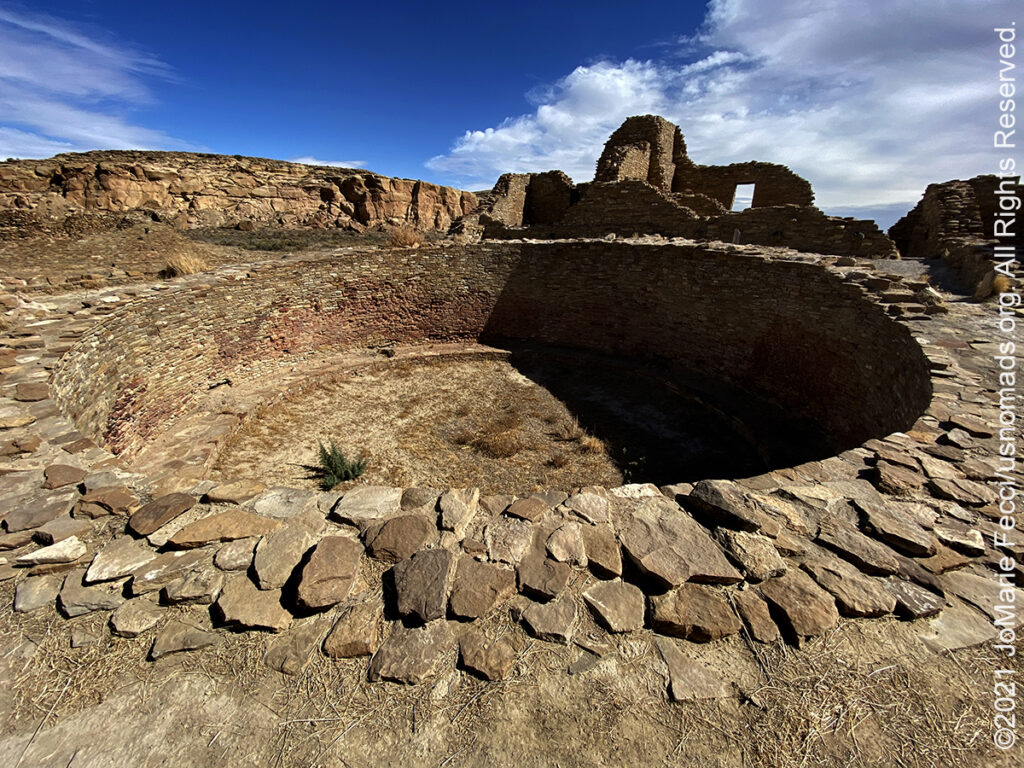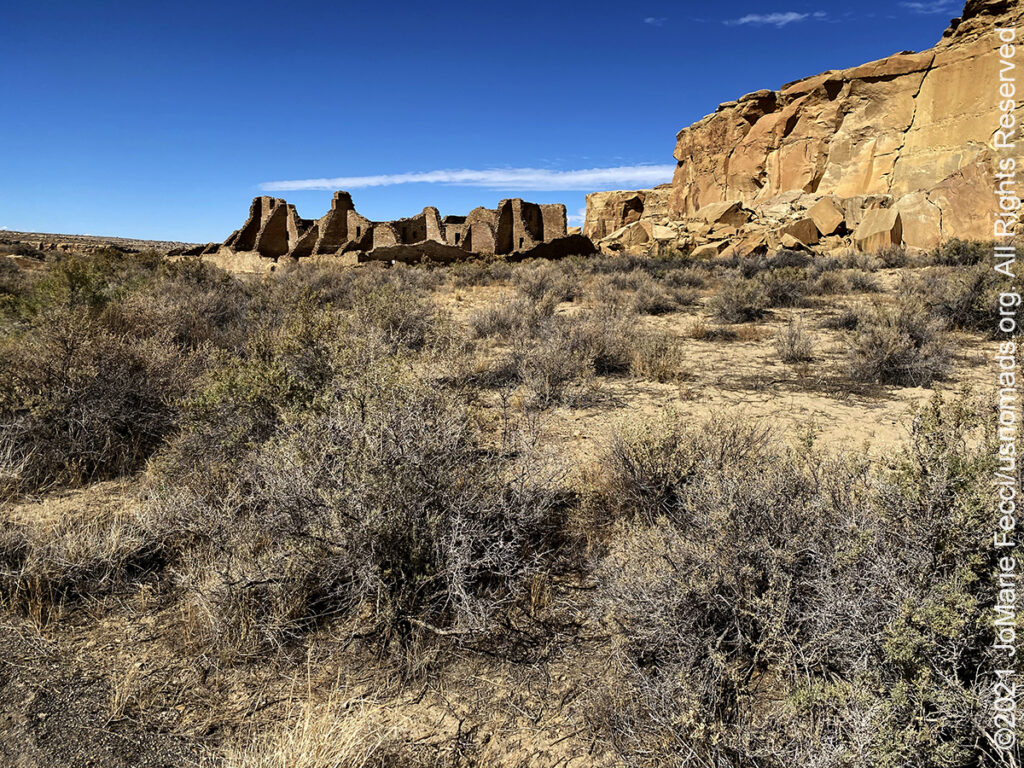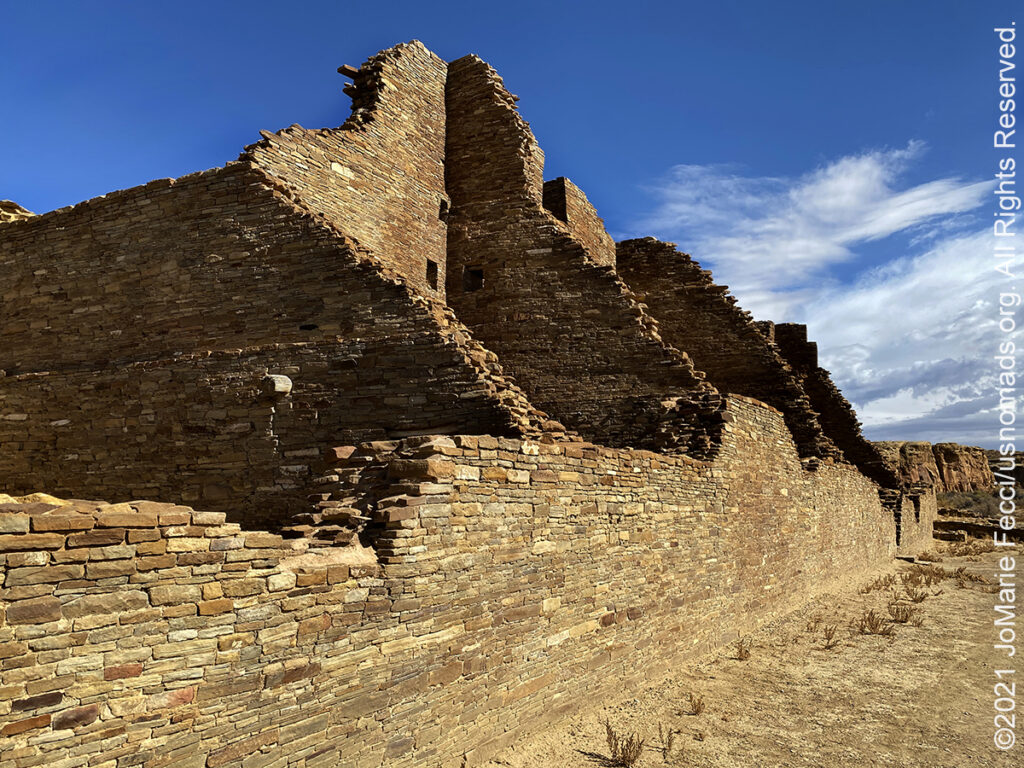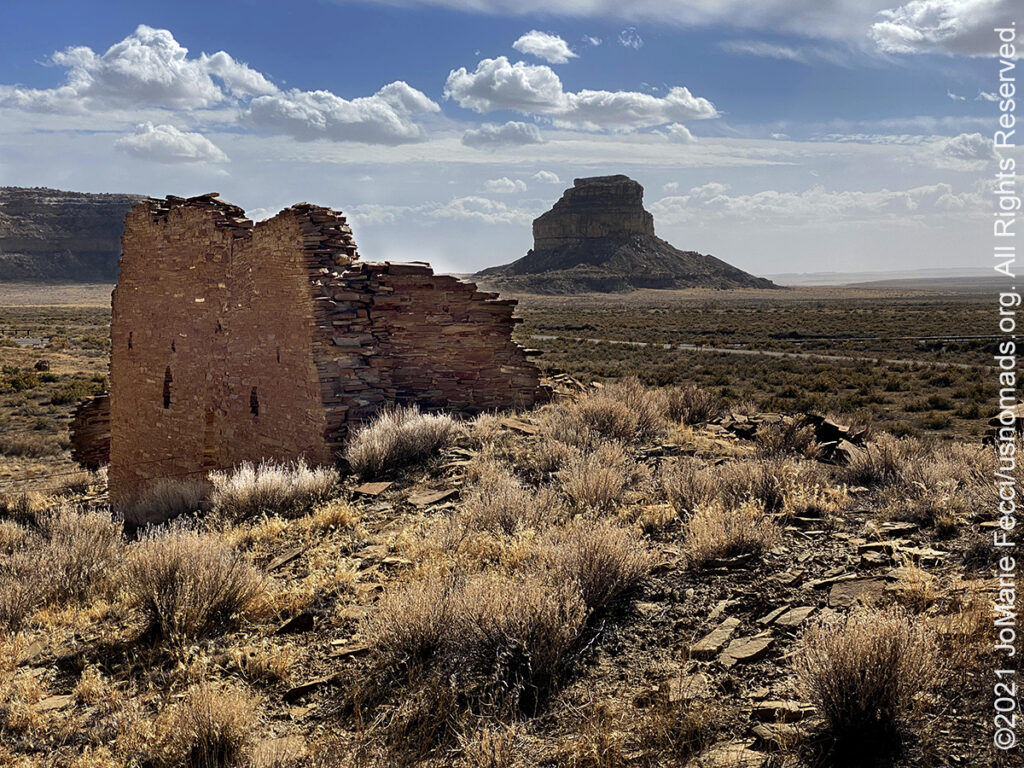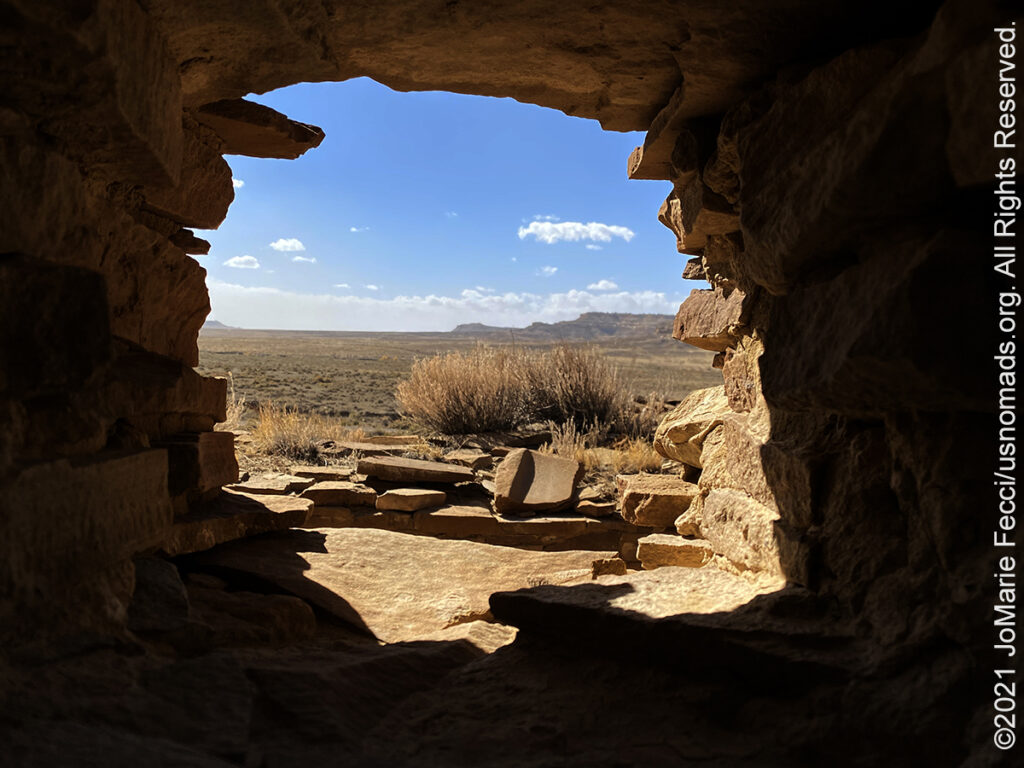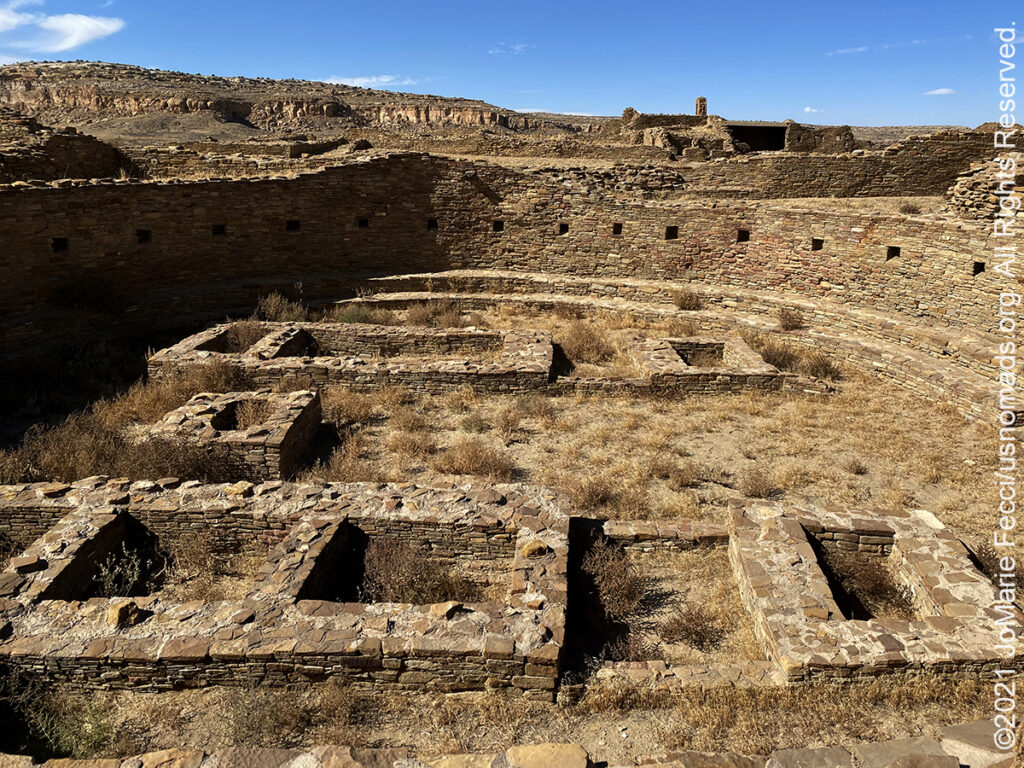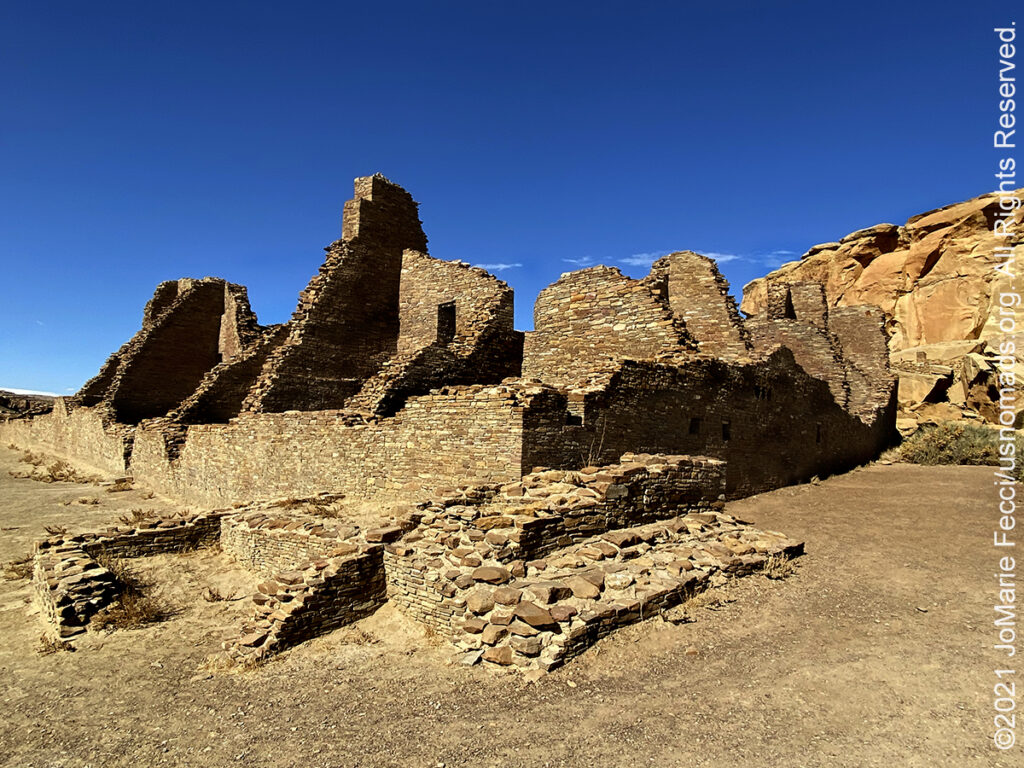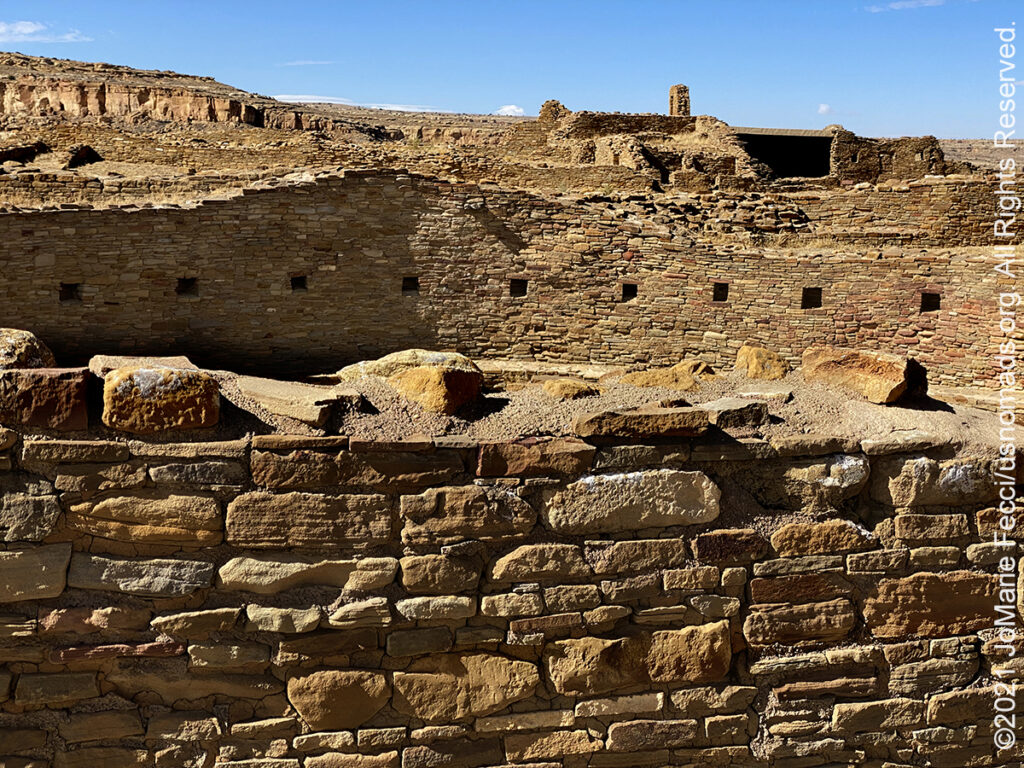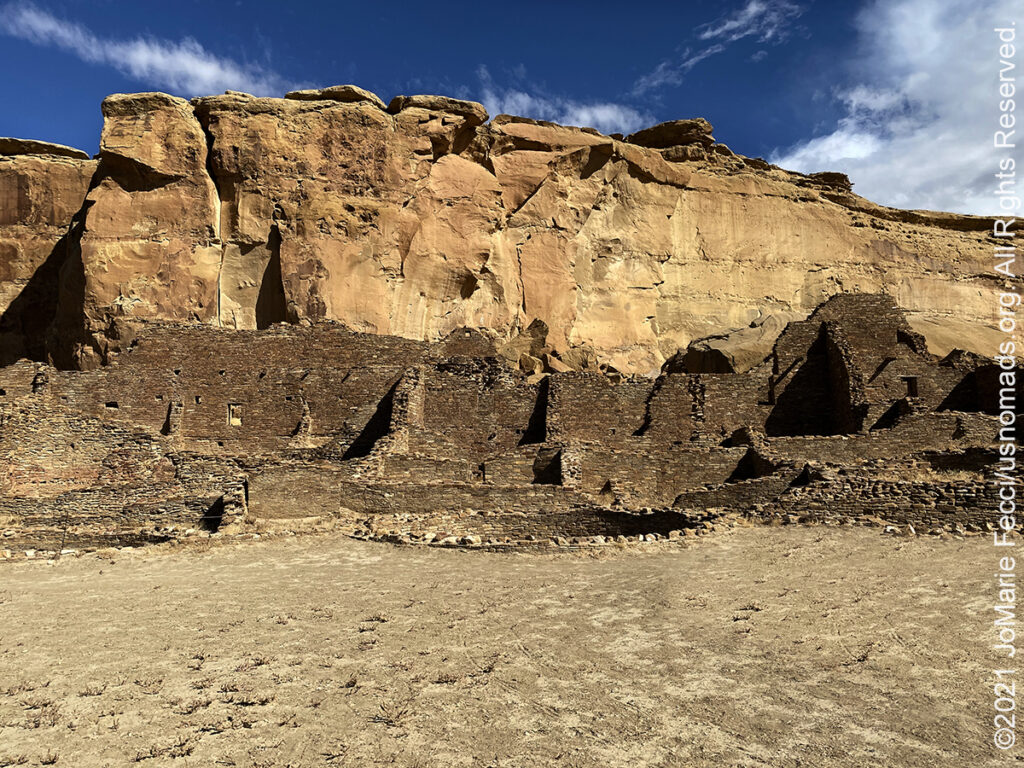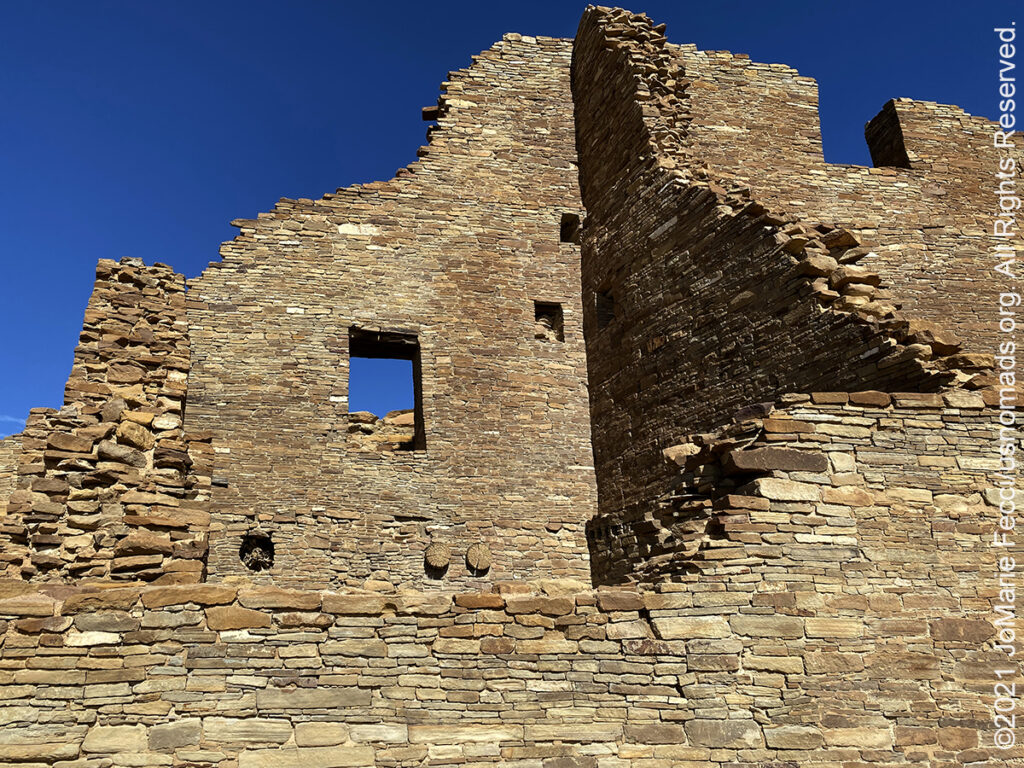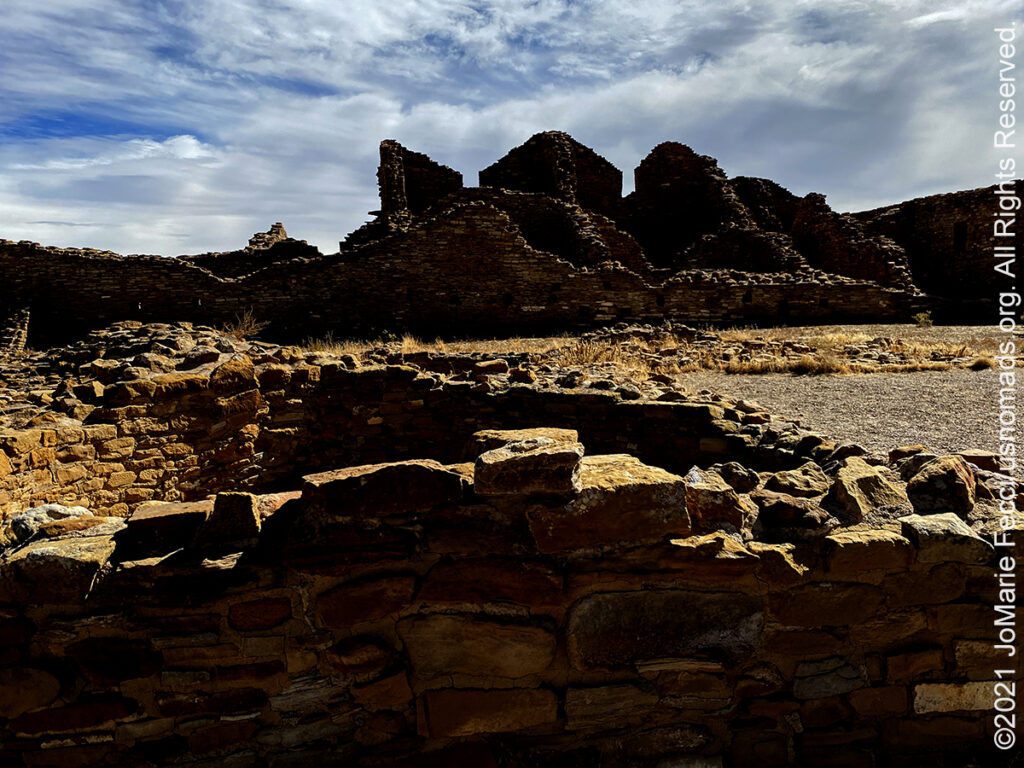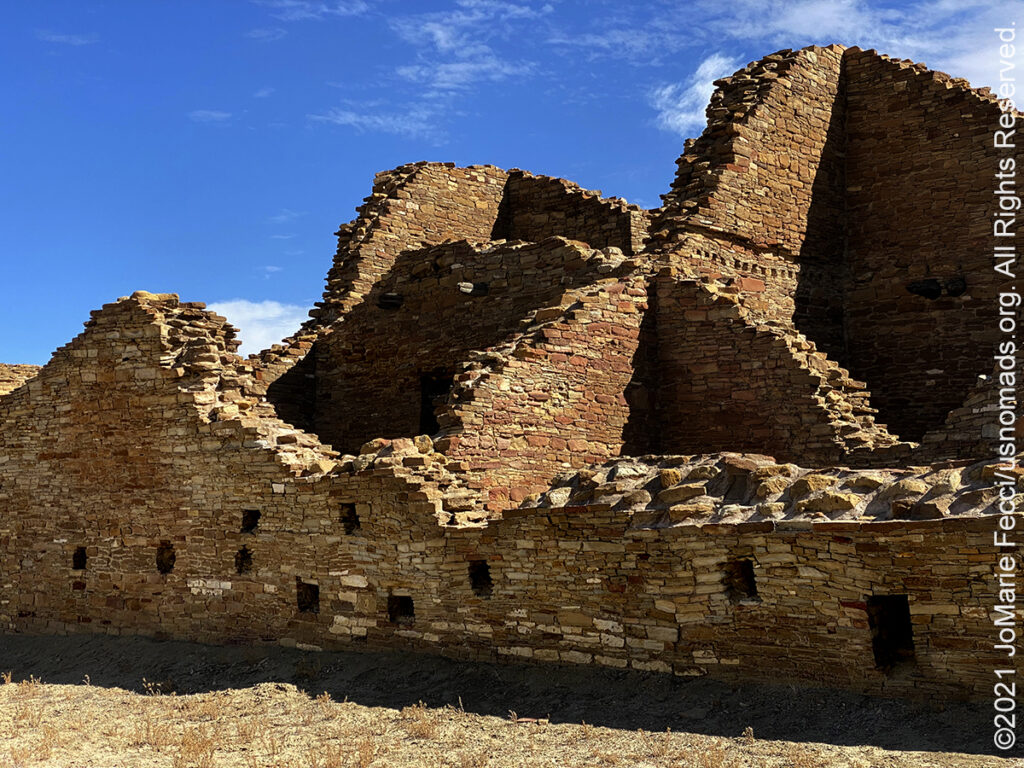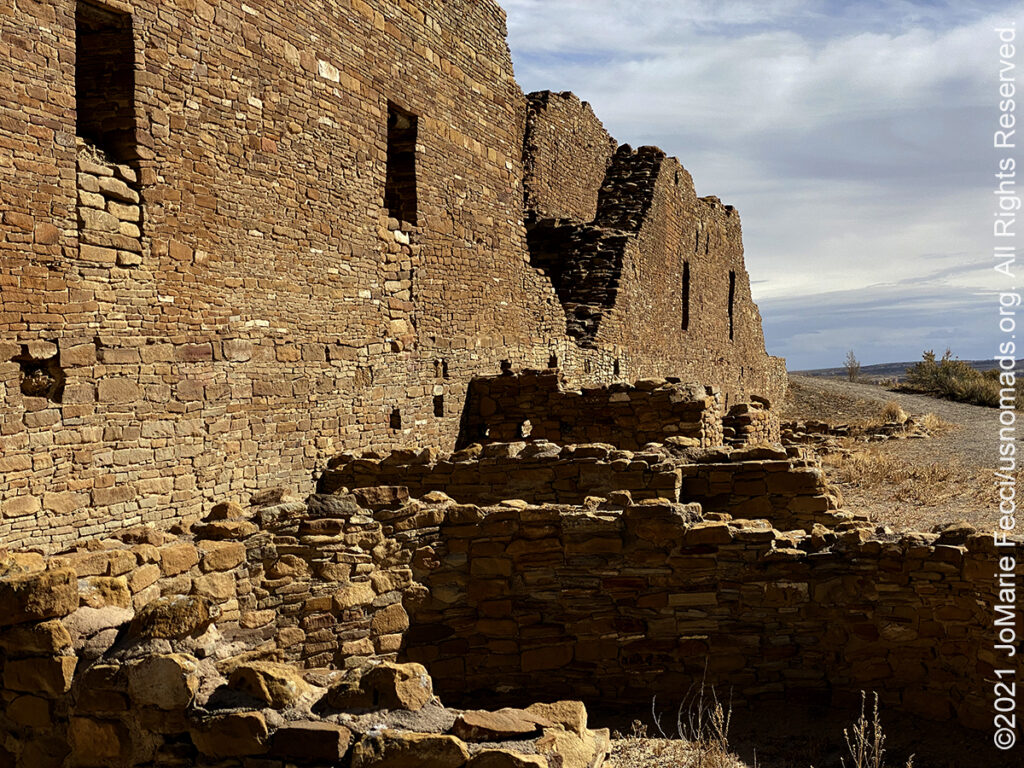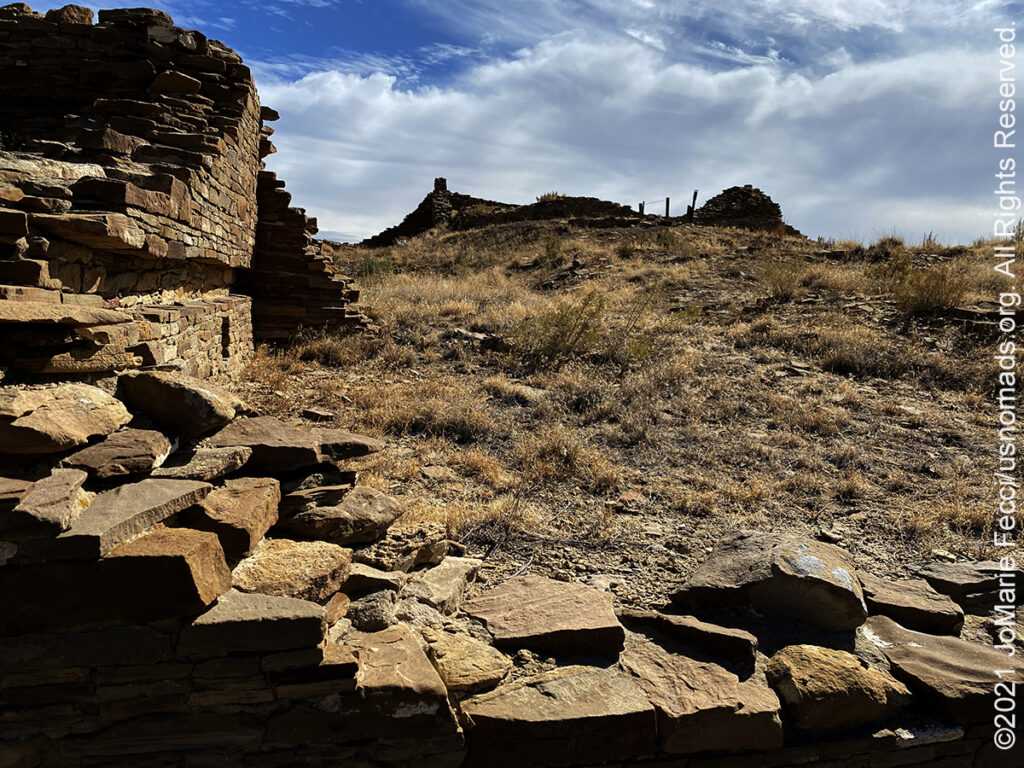Deep in the remote desert of northwestern New Mexico, accessible after miles of heavily washboarded roads that range from bad to worse, lies one of the greatest architectural achievements of north America’s early indigenous people — the Chaco Canyon complex. The jagged walls of the stone city stand out against the smooth rock of the cliffs behind, a beautiful juxtaposition of natural and man-made, both eroded by time. Chaco is otherworldly and spiritual, and like no place else I’ve ever been. The immensity and importance of the ruins equals Egypt’s pyramids, yet somehow despite the high visitation numbers, this ancient Ancestral Puebloan site has been preserved with dignity and protected from the worst types of touristic exploitation.
I wander slowly, purposefully, immersing myself in the experience of place. The presence of the ancient ones can almost be felt as I explore the stone walls of a “Great House.” Following a timeless path, I walk deeper into the ancient pueblo until I can no longer tell if I am “inside” or “outside.” The extensive ruins scattered across the canyon and beyond hold many mysteries despite the years of archaeological study. Chaco slowly reveals itself, on its own timeline, and safeguards some secrets forever.
What is known is that Chaco Canyon was a major center of ancestral Pueblo culture between 850 and 1250. Pueblo descendants say that Chaco was a special gathering place where many peoples and clans converged to share their ceremonies, traditions, and knowledge. Archaeological experts believe it was a location for ceremonies, trade and political activity rather than everyday residences. The monumental public buildings and distinctive architectural style is unlike anything constructed before or since.
Chacoan society reached its height between about 1020 and 1110. The Chacoans quarried sandstone blocks and hauled timber from great distances, assembling fifteen major complexes that remained the largest buildings ever built in North America until the 19th century. The Chacoans built their city surrounded by sacred mountains, mesas, and shrines that still have deep spiritual meaning for their descendants. Many of the buildings seem to have been aligned to capture the solar and lunar cycles, requiring generations of astronomical observations and centuries of skillfully coordinated construction. Lines of sight between the great houses allowed communication. The monumental public and ceremonial buildings and distinctive multi-story “great houses” were linked by an elaborate system of carefully engineered and constructed roads, many of which can still be traced. These achievements are particularly remarkable given the harsh environment of the region.

